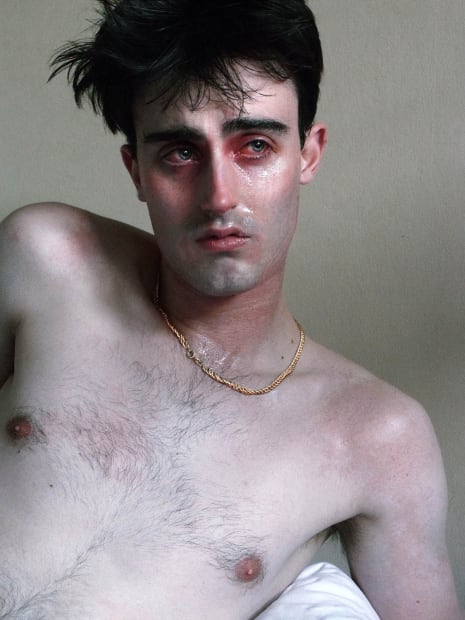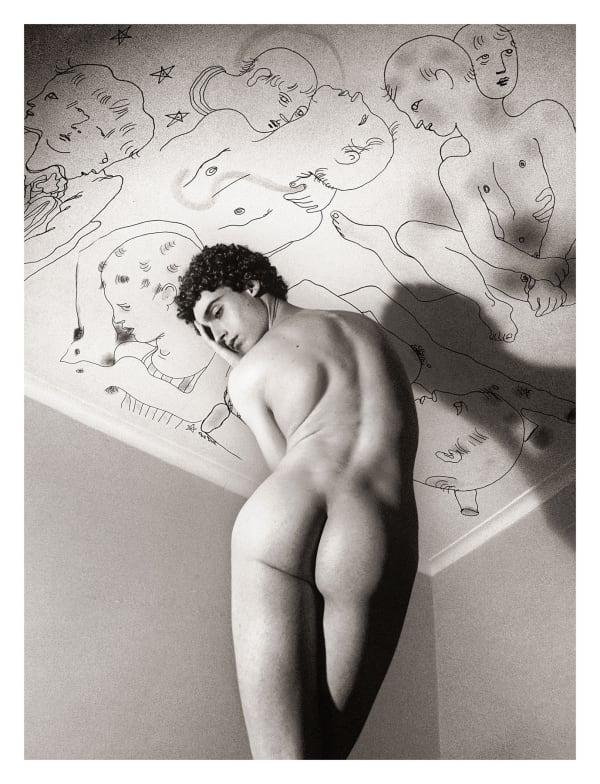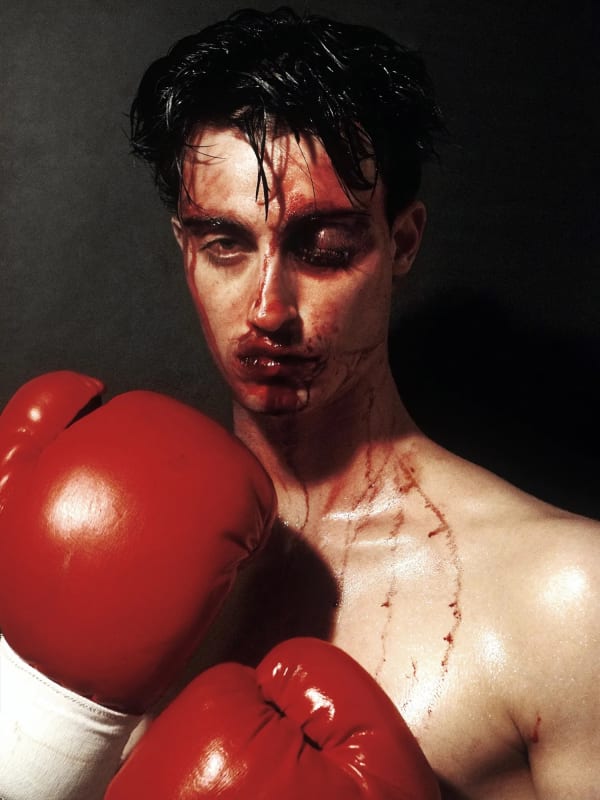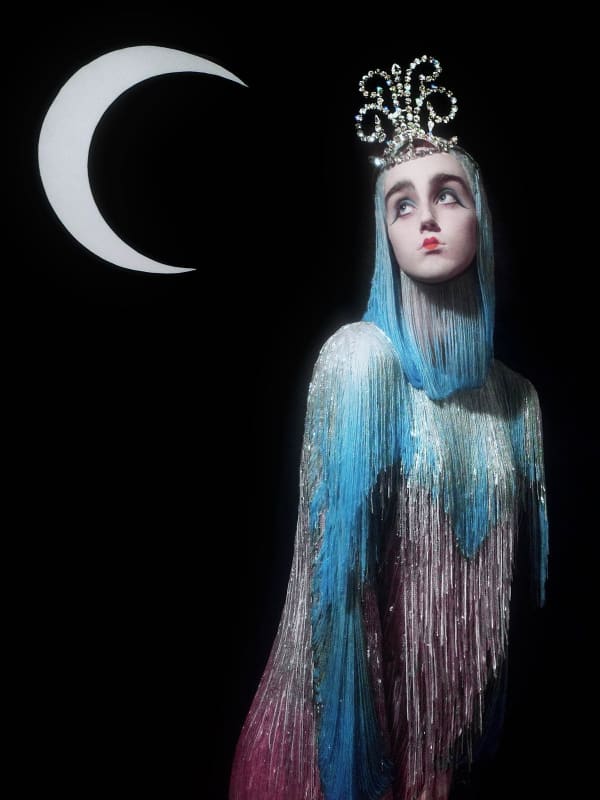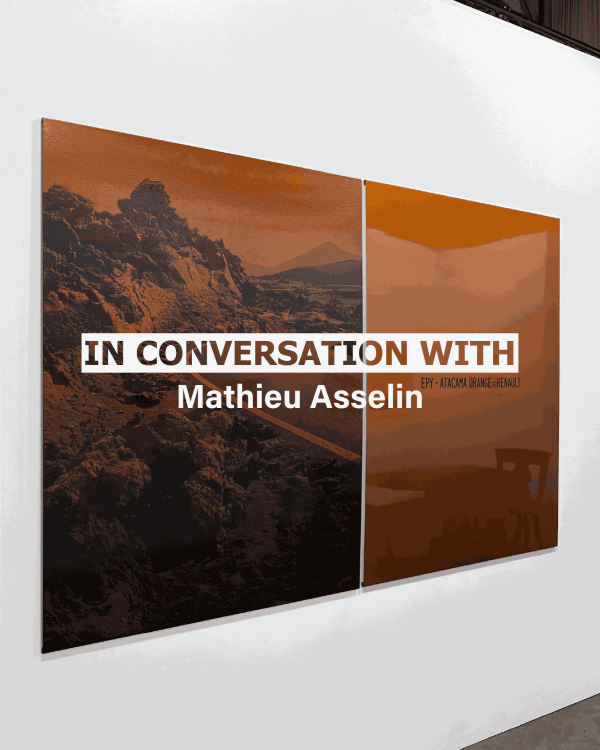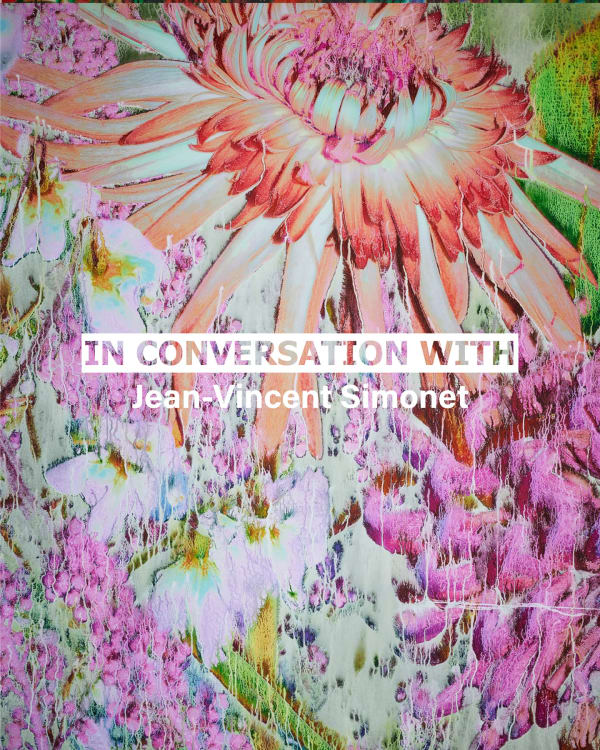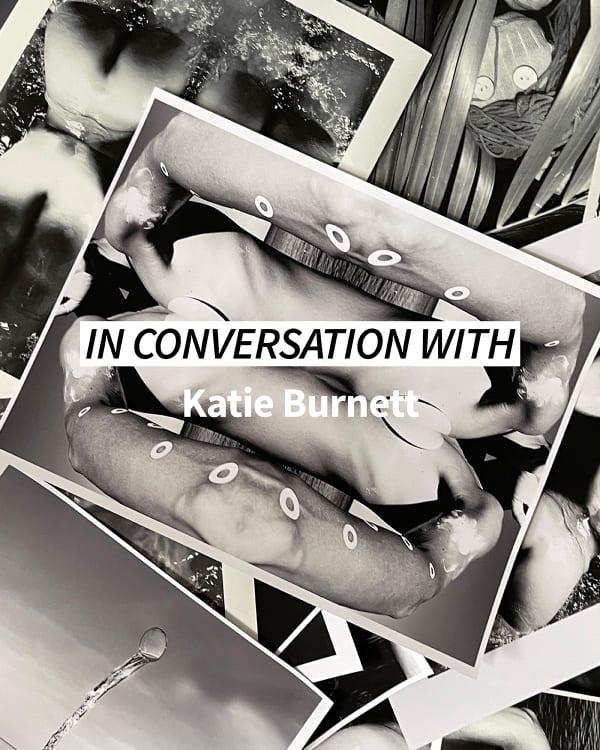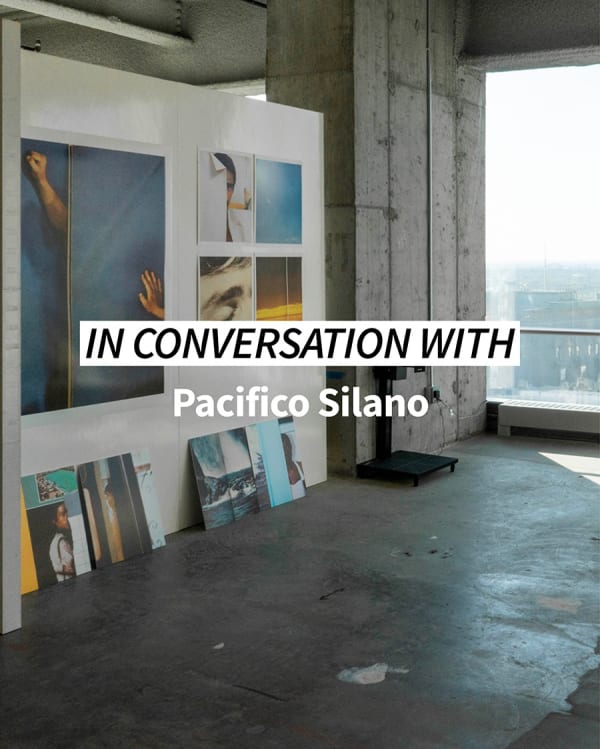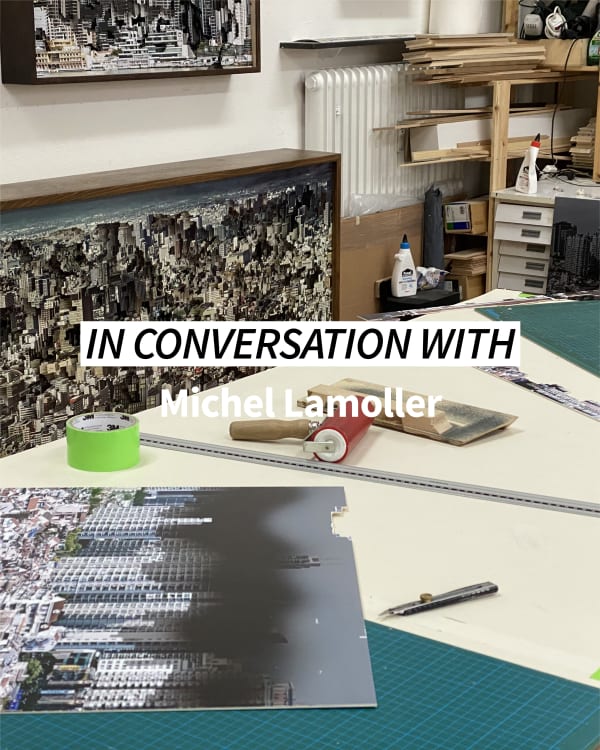-
Words by George King
Born in 1994 in the coastal city of Gqeberha, South Africa, Christopher Smith began creating art in the most personal of spaces—his bedroom. What started as teenage self-portraits taken with a cell phone evolved into a striking body of work that blends fantasy, fashion, and raw emotion.
Fuelled by a love of horror, sci-fi, and cinema, Smith’s art became a vehicle for both self-discovery and self-liberation, particularly through his coming out and the launch of his Instagram persona, @mechrissmith, in 2016. Since then, he’s cultivated a world where beauty meets brutality, and where each image—meticulously styled, shot, and performed solo—challenges norms around gender, identity, and violence.
In this in-depth conversation, George King explores Smith’s creative process, influences, and the inner life of an artist who turns limitation into liberation.
-
-

-
-
"Naturally, I see the parallels to artists like Cindy Sherman, Claude Cahun, Yasumasa Morimura and Peter Berlin". - Christopher Smith

George King (GHK): To plot the points for someone who doesn’t know your work, what is it, at its core, that you’re doing?
Christopher Smith (CS): It really all started with self-expression. In school I was, you know…gay, and not always feeling comfortable in my own skin. Eventually, photography became this outlet for me to explore all these different sides of myself that I never used to see. I never saw myself as interesting, and I was never really treated that way. So it kind of became a way for me to discover and explore who I was at that time, to delve into what I found sexy or interesting…it became a tool. I suppose it’s evolved since, and there are various recurring themes throughout the work that reflect the things my mind is preoccupied with on a daily basis: beauty, sex, gender, violence, politics.
GHK: There’s obviously a rich heritage of performative self-portraiture in photography: figures like Francesca Woodman always come to mind, as does someone like Zanele Muholi. But then there's also this subversive, gender-bending element in many great photographic self-portraits, from Claude Cahun to Ulay, from Cindy Sherman to other more recent examples. How do you situate your own work within these traditions?
CS: Well, when I started, I didn't even know who any of these artists were! I just wanted to learn how to take pictures and I thought it would be easiest to use myself as I went along. Obviously, it became something bigger: the pictures really started to become a very personal mode of artistic expression for me, whilst there’s often some kind of message or commentary that I'd like to make with each one. I tend to see myself as embodying a character or a persona that isn’t really me, but as a wider body of work they do reflect who I am, who I’ve been over the years. There’s a fragment of truth in each one and it’s only really when I look back on them that I see it.
That said, the idea of myself as a ‘self-portrait artist’ is still something I struggle with, because I just think of my work existing as photographs in their own right. Naturally, I see the parallels to artists like Cindy Sherman, Claude Cahun, Yasumasa Morimura and Peter Berlin – whose works I think are all brilliant and inspiring – but the genre itself isn't something I think about that often. If I did, I’d be crippled with self-doubt! In my own mind, I'm an artist trying to make work that reflects how I feel and the kind of imagery I'd like to see in the world.
-
-
It started in high school, just with a cell phone. And that’s what opened my eyes to photography and its power to transform
-

The emptied out bedroom
GHK: So were you quite removed from the broader art context when you started out?
CS: I would say I was completely distant. I’ve been making these images since high school, but it was only in 2016 that I decided to share them on Instagram. What’s the point in doing this if no one sees it, I thought. At that time I was focused fully on the fashion world, because that’s my number one obsession; I didn’t even conceive of myself as an artist, I purely saw myself as a fashion photographer, which I still am to a certain extent. I wanted fashion people to see it, I wondered what they might think, whether they would be interested, if I was even good? I had no conception of whether what I was doing was interesting, valid or anything like that!
GHK: So this was all coming to life in high school?
CS: Yes! It started in high school, just with a cell phone. And that’s what opened my eyes to photography and its power to transform – and to transform people’s perceptions of you. Then I realised – because it started really just with phone selfies – that it was also interesting to focus on light, styling, poses and I was like: ‘oh ok, this is a little more than just selfies.' I then got a camera and started learning a little bit more technique, taking it a bit more seriously.
GHK: And your experiments with performing these different characters were all playing out in your childhood bedroom?
CS: Yes – and I’m still right here, right now! Initially I wasn’t interested in being an artist, I just really liked doing: putting up sheets as a backdrop, borrowing clothes from my sister’s wardrobe to dress up in, creating. Everything was inspired by fashion photography, because that was then the most accessible form of imagery to me. So I really liked doing that – all in my childhood bedroom. It was a place I could use to learn technique. A lot of the early pictures weren’t conceptual, they were more like experiments with technique: if I were to stand here, what would the light be like? If I put this on my head, or if I put the camera down here, what happens? So it was only around 2015, before I got Instagram, that I felt like I finally had something to say.
GHK: And what was the outlet for those initial images if you weren’t yet using social media?
CS: I was making them mostly for myself. I would also put them as profile pictures on – back in those days – BBM (BlackBerry Messenger), which is a dated reference.
GHK: Those were the days!
CS: Yes! And then of course friends would see them and react to them there, but it was nothing I would share widely, it was just my own thing.
-
The Creation of an Illusion
-
"Most of it was in isolation, but everyone around me, my family, were always very supportive of everything I was doing. It was more a case of them lending me stuff rather than actively pitching in." - Christopher Smith
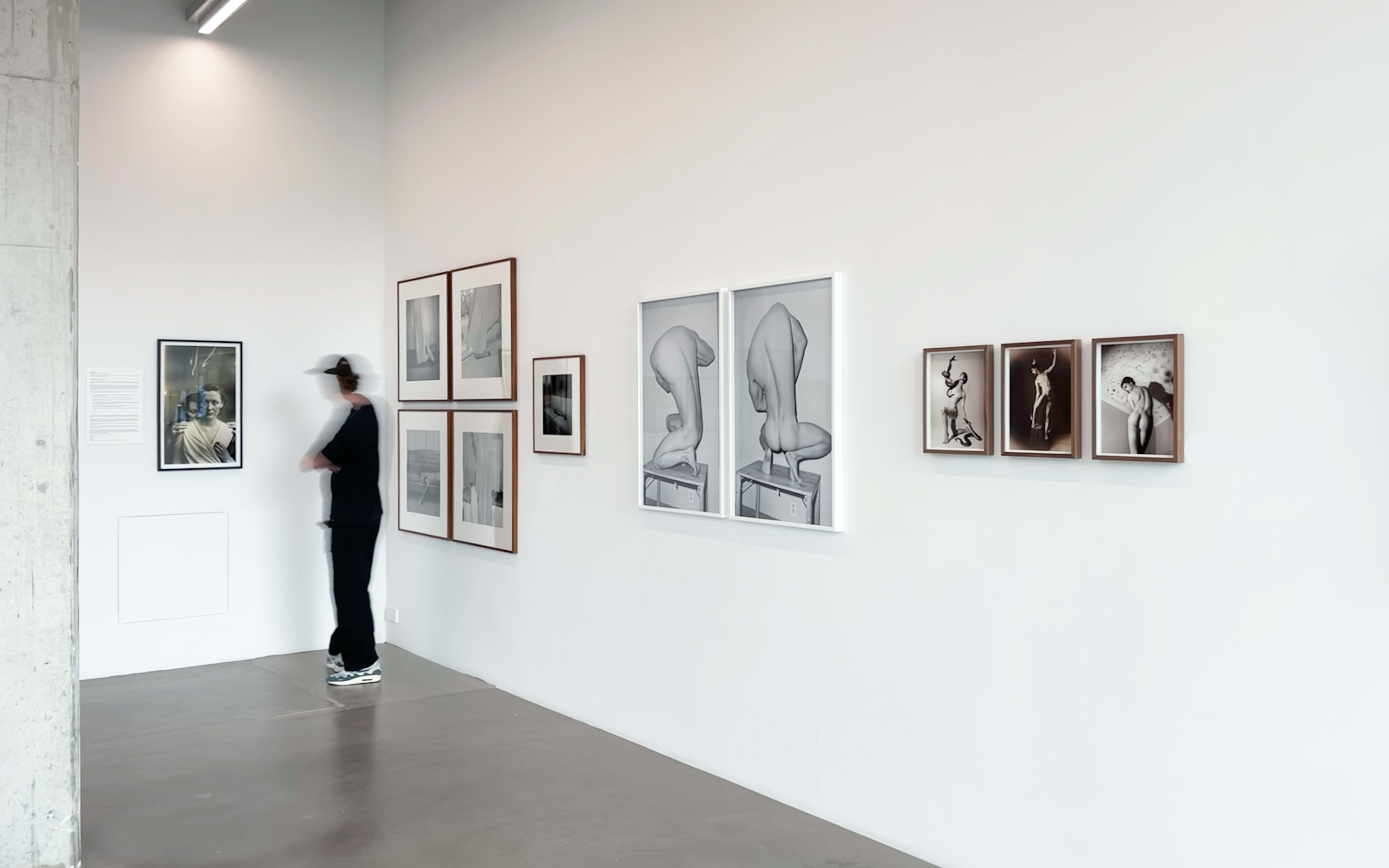
Installation view of MONOCHROMATIC at The ravestijn gallery amsterdam
GHK: Were you studying art in school?
CS: No, none at all. The books I have here tell the story; I was looking at these images and seeing what I could learn, but it was equally about my love of just setting things up, making, experimenting. I feel like this all goes back to me liking movies as a kid, or imagining the behind-the-scenes of my favourite films. Now I look back, I realise what I loved about the image-making process was the creation of an illusion, which for me is quite easy to do – unlike with a movie! After high school, I did go on to study graphic design at university – and that had a major impact on the development of my creative practice, on my understanding of visual communications in general, but the photography was all self-taught.
GHK: I’ve seen, in other interviews, that you’ve referred to yourself as a bit anonymous in school! Did you really have none of the theatricality that we see in your pictures?
CS: No! This was my outlet. I use the term ‘plain Jane.’ I’m joking of course, but I was just normal, average. Photography became my way of seeing myself in different ways. I realised I could be sexy, scary, all these different things. That’s what really made me fall in love with the medium. And it makes sense that fashion photography would be such an influence, because it has the same kind of impulse to transform everything: hair, makeup, backdrops, clothes, gesture, pose, all those things, everything!
GHK: Was working in the childhood bedroom – this place where identities are often discovered, negotiated, performed – a solitary pursuit? You mentioned borrowing your sister’s clothes?
CS: Most of it was in isolation, but everyone around me, my family, were always very supportive of everything I was doing. It was more a case of them lending me stuff rather than actively pitching in. I would go to my room and set up a sheet – in the early days it was lots of sheets, where nowadays I use paper – then prep the camera, grab some scraps to shoot with from around the house. I’m still mostly working at home, just because I feel like I’m too self-conscious to be going out in public in all these looks! I have this aspiration to go to the woods somewhere and make a series of nudes or something…but to do that alone would be so hard. There’s so many factors I’d have to contend with if I were to go beyond my space: it’s the weather, the hair, the makeup. It would be a lot.
-
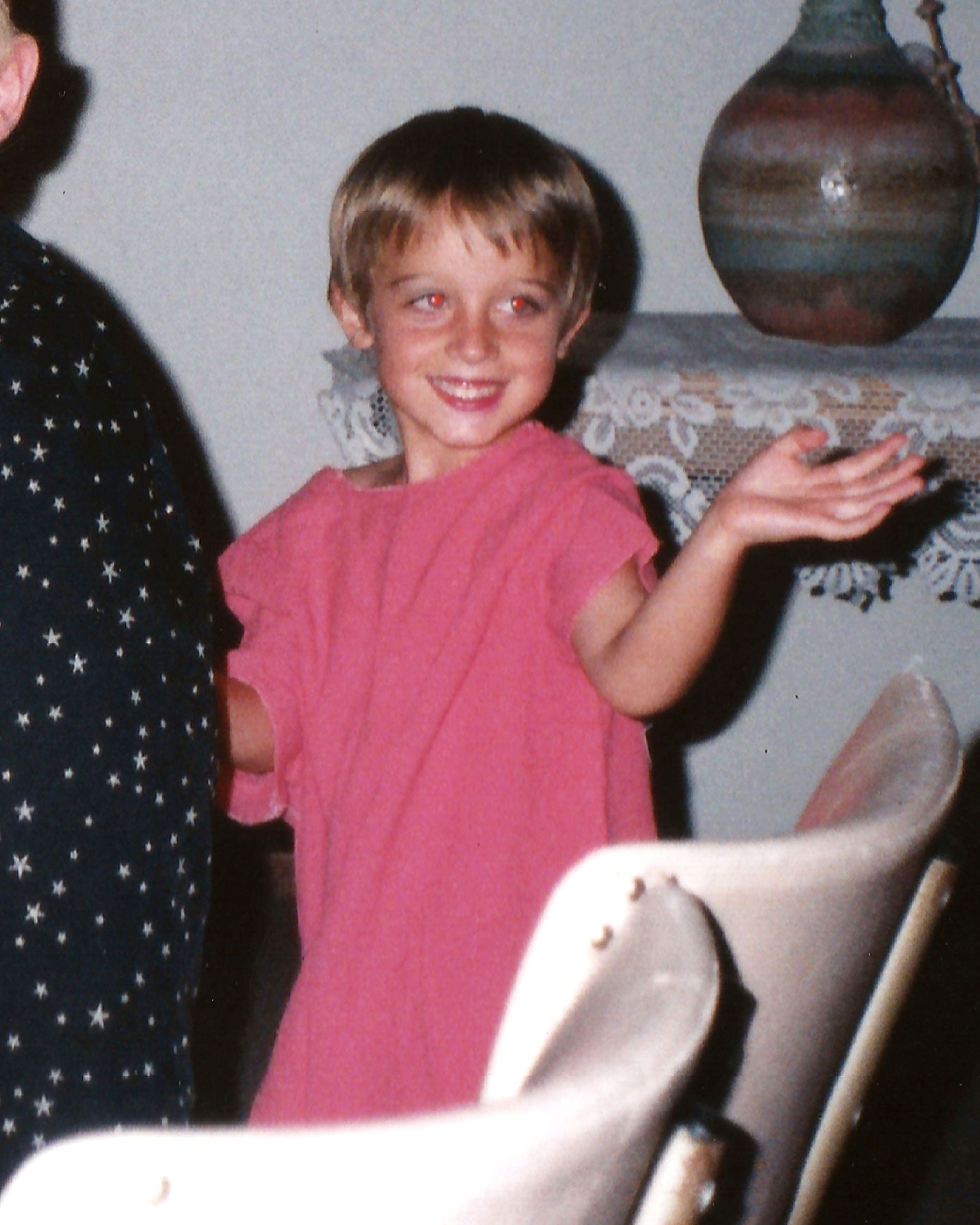
5 year old Chris
GHK: And what about a studio space? Would that not function for you?
CS: It’s not that I don’t think it would, I’ve just never had the desire or the need. I must tell you, I don’t feel that technically restricted where I am. it’s kind of wild to people – and there are restrictions, don’t get me wrong – but I don’t think having more space would change anything radically. Turning the camera on other people would be something, that would be a big change, and it’s something I’d love to do! But I feel like I could take one of my photographs anywhere, even in this small space I’m sitting in now.
GHK: It’s also this thing of parameters maybe? I read that you have three different spots in your room that you rotate between? It’s maybe the same as a photographer who shoots analogue; the roll of film lends some restrictions to a photographic session.
CS: I secretly love some constraints, somewhere! I think it forces you to be creative. I mean, I don’t have sets: I literally have a wall here, a wall there, and either the window light or my reading light that I use for dramatic shadows. I love the restriction of it – I have to think about how I can solve puzzles, how I can create an illusion that the space is huge, for instance. And that’s also why I like the idea of commercial photography, because I know there are always restrictions imposed on that. I love the idea of pushing a little bit against those things, seeing how far you can push to create something really special.
-
Collabs & Commissions
-

GHK: You mentioned this ambition to train the lens on someone else: I guess one of the difficulties with that is that you’re currently wearing lots of hats: you’re the stylist, the makeup artist, the model, the photographer, the set designer, the hair stylist…but on a bigger production, how do you place yourself among that cast?
CS: Exactly! And how much do you give up in doing that? That’s always the thing. I really am collaborative, but I’m also very specific about the things that inspire me. Some things just don’t click for me. It’s all about finding the right kind of subject I would say. I’m so uninhibited, and that’s what works in the pictures – obviously it’s my lens so I’m free to do whatever I want – but working with someone else, I need them to have that same kind of energy.
GHK: On that note, who are your clients?
CS: A few years back I did a shoot for AnOther Man; they wanted a Tom Ford Beauty story so they sent me some sunglasses and some makeup to create with…the broader theme of the issue was around horror. I ended up doing something inspired by The Invisible Man, which I look back on now and think: ‘wow, that’s crazy I was able to do that!’ It’s a weird reference that you wouldn’t think would fit within fashion, but it made sense for that particular issue. I’ve also done some stuff for Acne Studios: for Acne Paper I did these 8 images that each reinvented one of the magazine’s previous covers, and for the brand itself I shot a series for the 2022 men’s fall/winter collection. I loved it! I had so much freedom! They sent me the whole look book and really allowed me to dictate the kind of images I wanted to create. More recently, I was honoured to shoot the cover for the 15th anniversary issue of Luis Venegas’ Candy Magazine.
-
"Most of my ideas, my characters, come from that research. But I’m also looking at books, old photographs on eBay, images from adverts and things like that." - Christopher Smith

GHK: And to go a little deeper into your work and the images themselves, would you say that your self-portraits are principally about developing characters and the worlds you imagine they might inhabit?
CS: Yes…but a lot of it’s intuitive. If people would see some of the references I’ve used for certain images, I’m not sure they would necessarily see the connections. Sometimes it’s obvious and I’m trying to evoke something very specific. Other times I see something and it’s more about an aspect of a picture or an artwork that I’m taking somewhere, so the final product ends up being something very different from the source. When it comes to performing the characters, often – when I put on an outfit – I can start to feel if this person would be stood a certain way, the kind of attitude they would evoke, so a lot of it’s instinctual. Other times the characters are derived from a fixed reference I have in mind. That’s all in my head and probably not precise at all, but it means that the final image will always be very much filtered through my mind.
GHK: And where do these references come from?
CS: I spend my days – and I’m not joking – constantly on my laptop: I’m always online! Most of my ideas, my characters, come from that research. But I’m also looking at books, old photographs on eBay, images from adverts and things like that. Then there’s all the photography books I have. Sometimes I think I have too many books, but if you flip through them you will always encounter something new. For me, when it comes to ideas and inspirations, I’ll often see something for the first time and think of it as super interesting, then completely forget about, then come back to it in couple of years time and say ‘now’s the time!’
GHK: Do you find inspiration in people at all?
CS: No, not really. There’s not enough fantasy in real life! Most people’s lives, and mine too, are a little bit plain – so it’s about escaping that. When I’m looking at painting from the 1600s or photography from the 30s or 60s, I’m imagining all these exciting things. I can be inspired by speaking to people about my work, though; sometimes people have the most crazy interpretations of my images or an idea I have, and sometimes that can spark something.
GHK: And where do you find the materials, the props, the costumes that make their way into your images?
CS: The majority are found locally: I go around town, I try to find low cost clothing shops, sometimes second hand shops. One of the things that always inspires me are mannequins in shop windows. Sometimes you find an outfit and you think: ‘I know exactly who would wear that! I know exactly what image I could create with that.’ When it comes to these kind of things, party shops are great – where they sell halloween decor and stuff like that. It’s rare, though, that I ever get something to use in a picture and keep it as is; I know how to style it with various things to elevate it beyond what it actually is. And that’s another restriction! It’s fun because it’s a question of how I can make something cheap look like a designer outfit, or how I can use a new object to evoke something from the past.
-
-
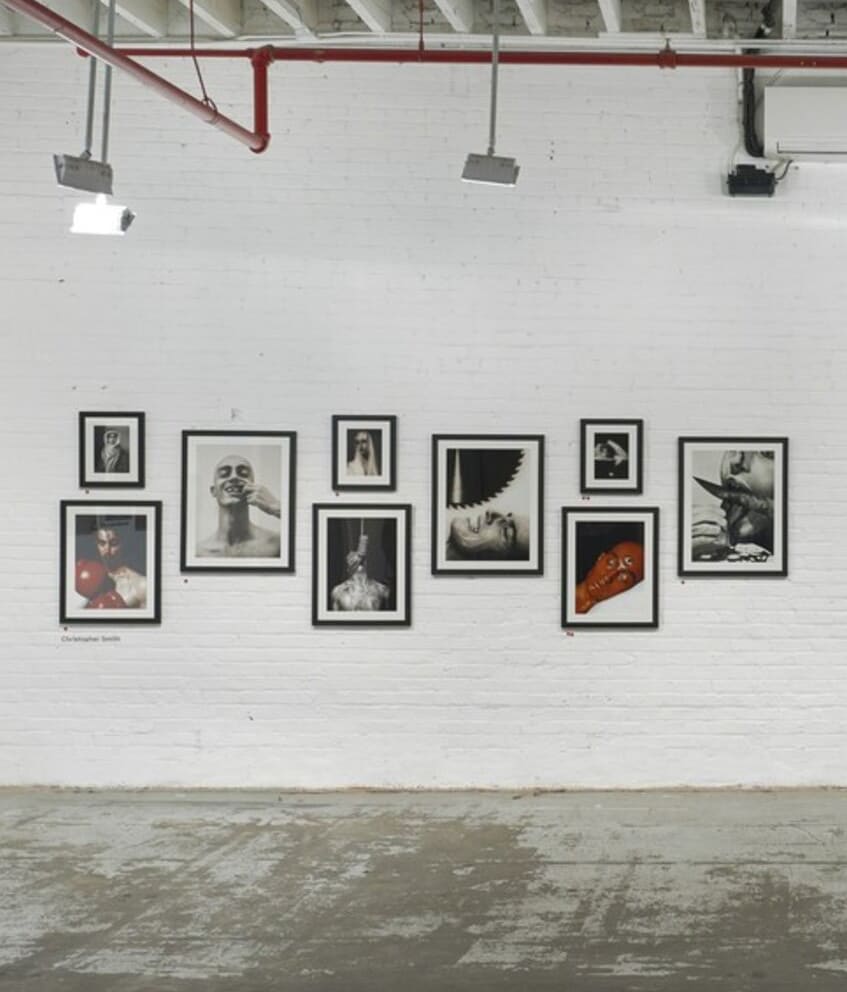
Installation view of NEW ARTISTS III at Red Hook Labs, New York
GHK: What’s your next character – the next picture – you’re planning?
CS: This clown suit that I bought in a toy store is gonna be a Russian ballet dancer! I’ve also got a sailor costume from a costume shop that I’m going to do something with: you can never go wrong with a sailor! Yesterday, too, I shot this new snake image…the reference is a little bit random, but it’s inspired by an old illustration I saw. It’s a completely bald red head with a black snake crawling over it.
GHK: Given that much of your work was first made to be shared online, what does it mean to see it now in a magazine, a gallery, an art fair?
CS: The first time I remember exhibiting my work properly was through Red Hook Labs in 2018, as part of their new artists exhibition. That was the first time I had any idea that my work could exist as physical artworks that people might actually have an interest in! I sold quite a few works through them, even in the years after that. It was a chance to see my work as something very tangible, beyond Instagram, which was a huge moment for me professionally. It really changed my perception of the work, and of myself as an artist.
When it comes to that shift, up until just last year I was using the same little camera that I got in high school; I never saw restriction in that, like I described with my working space. Last year, I finally decided that I needed a new camera, that it was time to upgrade – and that was a big thing! It means that, from a technical perspective, the work can be taken more places just because of the quality of the image. It also represents a confidence in myself as an artist, in terms of taking the work a bit more seriously and investing in my process.
GHK: Do you care at all about how your work is read or interpreted?
CS: I never like prescribing anything, because people always surprise me when it comes to how they see the work. People seem to understand it on a gut level, which is amazing! It’s also why I avoid titles; I never conceive of images with titles because I don’t want to dictate how they’re read.
-
I’m thinking about making a book
-
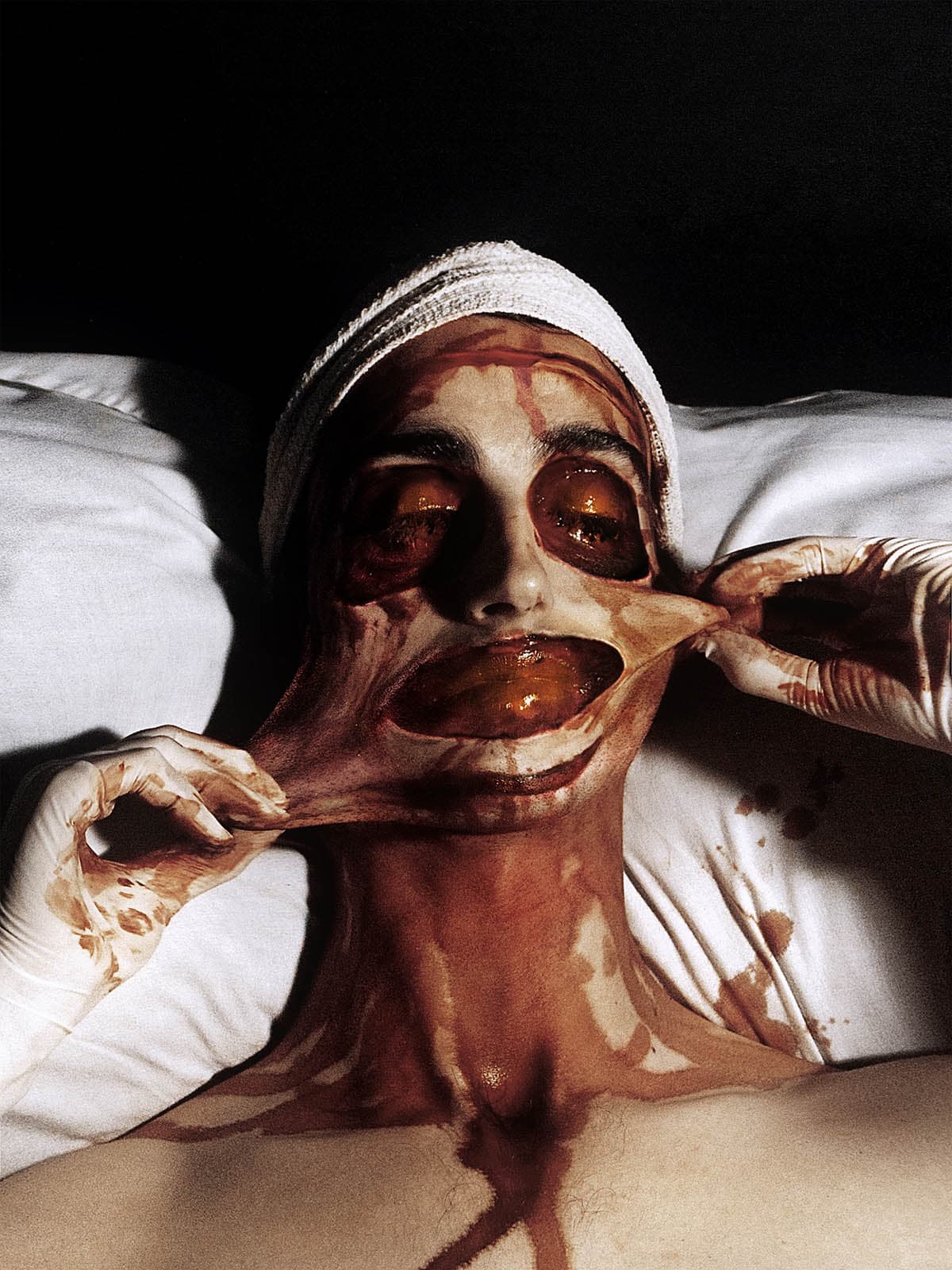
"If I’m sick of looking pretty, I’ll want to fuck up my face and be grotesque." - Christopher Smith
GHK: I guess it’s about allowing people to project their own fantasies onto the image?CS: 100 percent, And they do! I see that on Instagram: the comments are often so interesting!GHK: Could you maybe zoom in on some of the images that felt really seminal to make.CS: I still remember the first image I created with a reading light. It sounds so funny now, but it was a huge revolution for me – even if the image doesn’t feel that remarkable. So a lot of those seminal, personal moments came before my time on Instagram; my first image wearing some makeup, my first with a hat. It became gradually more theatrical…the first image I did full-body, for instance. Again, not the most remarkable image in itself, but I remember it, because if you look at the Instagram, a lot start with just the face. That had to do with restrictions: I couldn’t afford to do the full outfit, and I always thought I didn’t have the space to shoot my whole body. Eventually I made one full body image with my whole room turned over to make space, my mattress up against the wall – and I remember that vividly, even if it’s not the most romantic answer.GHK: It makes sense! It’s about pushing those boundaries for the first time.CS: Yes, exactly! Then there’s another image that really resonated with people, where you see me pulling my mouth open to reveal these missing teeth: that was one of the first images I shot outside, when I was figuring out what the light was like in that environment. These developments might sound very technical, but they really opened up my imagination! It was about pushing the limits of what I had.GHK: If you look back on the Instagram feed, do you notice any key transitions? I had the feeling that the earlier images were a bit more macabre?CS: No, I would agree with that. It’s not really something I’ve thought about; I probably went very macabre and felt there was a limit to that kind of imagery. Now I have what I’d say are ‘dark images’ but they’re not necessarily violent There’s definitely been an evolution, but that also has to do with my own mood. Ironically, as I feel more dejected or concerned about the world, the less I want to make those kind of dark images. I think there’s enough darkness around us sometimes.GHK: So there’s a big escapist element then?CS: Definitely, and a kind of rebellion. If I’m sick of looking pretty, I’ll want to fuck up my face and be grotesque.GHK: Any future plans?CS: I’m thinking about making a book. I started making images in 2015, so I’ve now reached a decade of work; it feels like the right time to be thinking about that. I’ve been hesitant because, to me, it’s always felt like a retrospective, but now we’re speaking about something that should feel like a snapshot in time, a document of a period. II often get messages from young photographers, people who are studying, so I’d love for them to be able to have my work in that form. So if there is an interested publisher out there don't hesitate to reach out! -
-
-
These exceptional works are now exclusively available in the Netherlands through The Ravestijn Gallery, off-line sales only. For more information about the artist, or these works, please contact the gallery at info@theravestijngallery.com.
-
-
Selected Press
-

Exhibition Review: Monochromatic
Groupshow April 24, 2023When color takes flight, what remains eternal is black-and-white photography. Black, white, and grey shed light on shape, form, and tone. The essential ingredients of an image are on full... -

Christopher Smith on gender, beauty and his characters
Christopher Smith September 15, 2020How would I describe what it is I do? Well, simply put, I’d say that I am a photographer. My creative process initially starts with an idea that can come... -

Christopher Smith: self-portrait en travesti
Christopher Smith March 11, 2020Self-taught visionary photographer Christopher Smith started experimenting with self-portraiture in his bedroom in Port Elizabeth almost a decade ago. He has since become an Instagram sensation and a darling of... -

Christopher Smith's Surreal Self-Portraiture
Christopher Smith June 25, 2021The South African artist Christopher Smith , known for his Instagram account dedicated to transformative self-portraiture, has brilliantly captured and reimagined the themes of Acne Paper , Acne Studios ’... -

A Photographer’s Elaborate Transformations in His Childhood Bedroom
Christopher Smith July 18, 2019Christopher Smith’s photographs are technically self-portraits, though each evokes someone else: a sullen detective, a naked gladiator, a flapper, an inmate, a sword swallower, a cowboy, a choirboy, a corpse.... -

What keeps you sane?
Christopher Smith December 1, 2024The present we live in is marked by chaos. Intense warfare, elections, budget cuts – living is stressful. It’s easy to feel like the frayed end of a wire, so... -

Scènes
Christopher Smith October 22, 2024Christopher Smith maakt in 2015 furore als kunstenaar met zelfportretten die hij als tiener in zijn slaapkamer maakt met zijn mobiele telefoon. De basis voor zijn werk is sindsdien onveranderd:... -

Chris Smith's self-portraits: 'I don’t recognise the person in my work'
Christopher Smith October 24, 2018Whether he's fashioning himself into monstrous sea creatures or transforming himself into a tortured angel, Chris Smith's bedroom portraits are pure fantasy. 22-year-old South African artist Chris Smith takes photographs... -

The Eternal Power of Fear
Christopher Smith May 30, 2018From the American nightmares of Raf Simons and Stephen King, Tim Blanks charts the eternal power of fear. With photography by Christopher Smith. Taken from the S/S18 issue of Another...
-
-
-
MORE CONVERSATIONS
-

In Conversation With: Mathieu Asselin
b. 1973, France -

In Conversation With: Jean-Vincent Simonet
b. 1991, France -

In Conversation With: Nico Krijno
b. 1981, South Africa -

In Conversation With: Eva Stenram
b. 1976, Sweden -

In Conversation With: Katie Burnett
b. 1985, USAA stylist by trade, Katie Burnett has always collaborated closely with photographers across assignments in fashion. But periods of pandemic lockdown, when she was unable to work on set, were... -

In Conversation With: Pacifico Silano
b. 1986, USAWorking as a lens-based artist, Pacifico Silano strives to appreciate gay identity through (gay pornographic) magazines from the 1960s, 70s and 80s. He interrogates the line between desire and masochism,... -

In Conversation With: Theis Wendt
b. 1981, DenmarkOften illusionary, occasionally subversive, and invariably crafted from a broad toolbox of materials and techniques, Theis Wendt’s works reflect his preoccupation with age-old questions of the human relationship to authenticity.... -

In Conversation With: Michel Lamoller
b. 1984, GermanyLast two weeks to see the acclaimed exhibition Anthropogenic Mass by Michel Lamoller, on show till Saturday June 18. An exhibition illustrating the mass of everything manmade which is now... -

In Conversation With: Mark Mahaney
b. 1979, USAAs a gallery we are always on the lookout for work that fascinates, resonates if you will, and sticks to you. Work we would like to acquire for our own...
-
